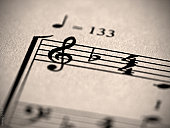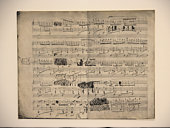
Home > Ear Training > Identify Music Chords
|
||||
How to Identify Music Chords on Piano
Other times you may be reading music to a song and want to transpose songs on piano or find a way to clarify what chords the song is based on. If you’re unfamiliar with chords structures and patterns, then even these simple tasks will prove very difficult to perform. It is essential for every pianist to effectively identify the music chords they encounter. Without knowing which chords you’re playing, everything is just notes to you. It is very difficult to remember that your left hand should play C, Eb, and G while your right hand plays Eb, G, and Bb. Instead, you could just think to yourself “Cmin7” and know exactly which you’re playing and also know all of the inversions and variations available at that moment. Knowing chords is one of the most significant tools a pianist has that transforms him from a I-have-to-read-every-single-note-on-a-page-and-can-never-deviate-from-them kind of player to a not-only-can-I-read-music-but-can-easily-remember-it-improvise-it-and-vary-it kind of player. Two enormously different kinds of players. Identifying chords is easier than you may think. The first step to identifying music chords on piano is determining which note of the chord represents the root. In the Cmin7 example above, the C note is the root.
Simply continue to make inversions of this mystery chords until your fingers are at even intervals with one another. The lowest note in this chord is known as the root, and this note gives the chord the first part of its name. So, if you happen to be playing Eb, G, and C, you need to go down one inversion before your fingers are evenly spaced by thirds, then you need to look at the lowest note. It’s a C. So you know you have a “C…something” kind of chord. The next step is to determine if you chord is major or minor, and this is easily accomplished by looking at the third. If the third is four half steps away from the root, then it is a major chord. If the third is only three half steps from the root, it is a minor chord. If you play C, E, and G, look at the E – it’s four half steps from C and therefore you know you’re playing C major. If you were playing Eb, then you know you’re playing C minor. The first steps to identify chords in piano ear training are to determine what the root note is and if the chord is major or minor. Practice playing various triads all over the piano and determining the inversions and which notes make which chords. Although look through the music you play and see if you can identify the chords used in those songs as well. Remember, however, that there is much more to chords than just major and minor triads, and the more advanced your chord-identifying becomes, the more you’ll be able to identify variations and unique types of chords as well!
Check out Perfect Pitch Supercourse for the proven method of learning perfect pitch...
| ||||
|
Although every attempt has been made to make information as accurate as possible, we are not responsible for any errors that may appear.
 Sometimes your fingers strike just the right notes for a song you’re trying to
write, but when you look down you flounder at any attempt to define what your fingers are playing.
Sometimes your fingers strike just the right notes for a song you’re trying to
write, but when you look down you flounder at any attempt to define what your fingers are playing.
 You can identify the root of the chord by putting your fingers into a
standard triad formation, meaning that there should be intervals of thirds between each of your fingers. If
when you play the chords, your fingers are not at even thirds, but rather have a third and a fourth, or a
fourth and a third, then you are playing an inversion.
You can identify the root of the chord by putting your fingers into a
standard triad formation, meaning that there should be intervals of thirds between each of your fingers. If
when you play the chords, your fingers are not at even thirds, but rather have a third and a fourth, or a
fourth and a third, then you are playing an inversion.



